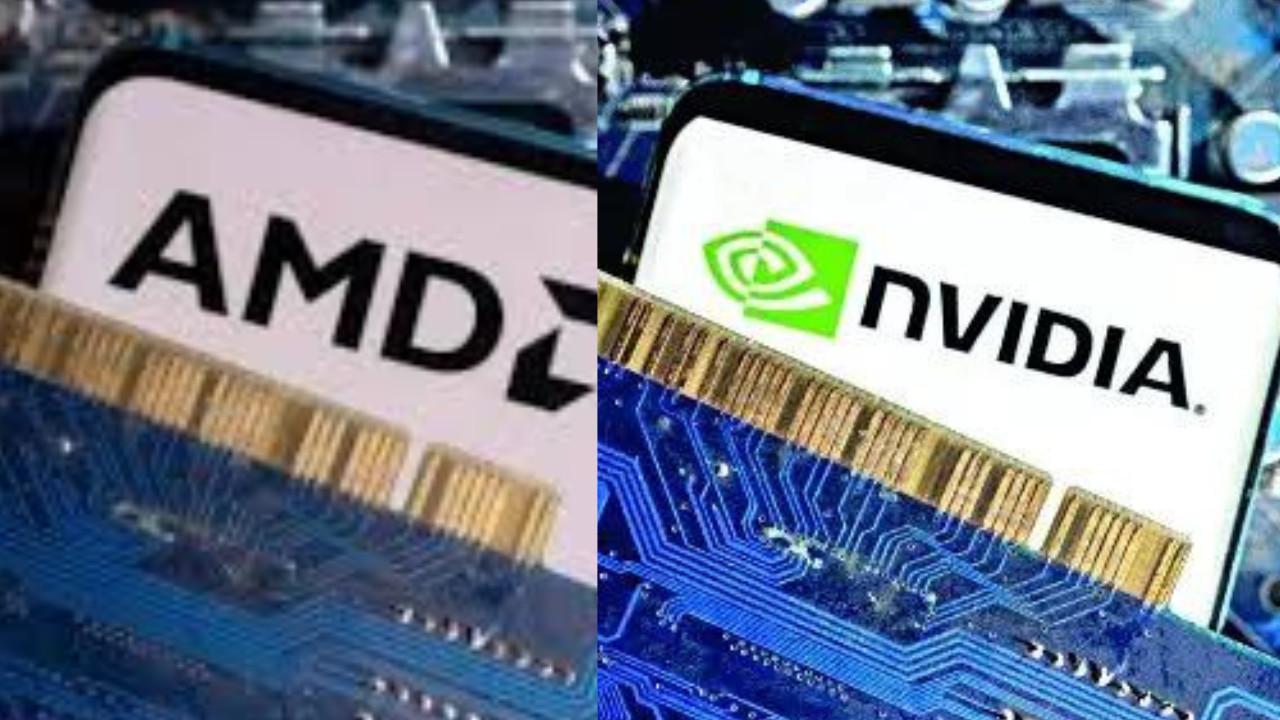Nvidia and AMD have reportedly agreed to give 15% of their chip sales revenue from China to the US government to resume sales of specific AI chips. This arrangement comes after Washington halted advanced chip sales to China in April. Nvidia hopes export control rules will allow America to compete globally.
Decoding the Chip Tango: How US Policy is Reshaping AI’s Future in China
The world of artificial intelligence is a hyper-charged arena right now, fueled by innovation and, increasingly, geopolitical maneuvering. A new chapter has unfolded in the complex relationship between US chipmakers and China, and it’s a game-changer for the future of AI development. Nvidia and AMD, two giants in the semiconductor industry, have reportedly agreed to share a portion of their revenue from China sales with the US government. This isn’t just about dollars and cents; it signals a significant shift in how the US intends to manage the flow of advanced technology, specifically powerful AI chips, to China.
The agreement, seemingly linked to export licenses for AI-specific chips, underscores the US government’s intent to monitor and potentially limit China’s access to technology that could be used for military or strategic advantage. Think of it as a kind of “tech tax,” albeit a more nuanced arrangement tied to continued access to the lucrative Chinese market. While the precise details remain somewhat opaque, the implications are crystal clear: the US is tightening its grip on the reins of AI chip exports.
The High Stakes of AI Chip Exports
Why all the fuss about chips? Well, these aren’t your average silicon wafers. We’re talking about advanced graphics processing units (GPUs) and other specialized processors that are essential for training and running complex AI models. These models power everything from self-driving cars and facial recognition systems to sophisticated military applications. Controlling the supply of these chips essentially means controlling the pace of AI development in certain areas.
This move comes against a backdrop of escalating competition between the US and China in the AI arena. Both nations recognize AI as a critical technology that will shape the future of everything from economics and national security to healthcare and education. Limiting China’s access to high-end AI chips is a strategic play aimed at slowing down its advancements in these key areas.

The immediate impact? Increased costs and logistical hurdles for Chinese companies looking to acquire these powerful chips. It might also incentivize them to invest even more heavily in developing their own domestic chip manufacturing capabilities, potentially accelerating China’s self-sufficiency in this crucial sector. The long-term consequences are far-reaching, impacting the global AI landscape and potentially altering the balance of technological power.
Nvidia and AMD: Walking a Tightrope
For Nvidia and AMD, the situation presents a delicate balancing act. China represents a substantial portion of their revenue. Complying with US regulations while maintaining a strong foothold in the Chinese market requires careful navigation. This revenue-sharing agreement is likely a compromise, allowing them to continue selling chips in China (albeit with a percentage going to the US government) while avoiding a complete export ban.
The agreement places these companies in the somewhat uncomfortable position of being intermediaries between two superpowers. Their success hinges on their ability to manage these relationships effectively and adapt to the evolving regulatory landscape. It will be interesting to see if this new arrangement affects their research and development strategies. Will they prioritize the development of chips that are less likely to trigger export restrictions, or will they continue pushing the boundaries of AI technology regardless of the geopolitical implications?
The Ripple Effect on the Global Tech Industry
This isn’t just an issue for Nvidia, AMD, and China. This US policy surrounding AI chip exports has a ripple effect across the entire global tech industry. Other countries are watching closely, assessing the implications for their own AI strategies and trade relationships. It could lead to a splintering of the global technology ecosystem, with different regions developing their own independent supply chains and standards.
Further, it might encourage other nations to implement similar measures to protect their own strategic interests. The era of unfettered global technology trade may be coming to an end, replaced by a more fragmented and regulated landscape. As discussed in our previous article on the semiconductor industry (link to related article), these kinds of restrictions are becoming increasingly common.
A New Era of AI Governance
The agreement between Nvidia, AMD, and the US government is a bellwether. It signifies a new era of AI governance, where technology is increasingly viewed through a geopolitical lens. The US is actively using its influence to shape the development and deployment of AI on a global scale. This is not just about economic competitiveness; it’s about national security and the future of global power. As AI becomes even more deeply integrated into every facet of our lives, expect to see even more complex regulations and international agreements governing its development and use. The stakes are simply too high for governments to remain on the sidelines.
The future of AI is being shaped not just in research labs and Silicon Valley boardrooms, but also in the halls of government and in the negotiation rooms where international trade policies are forged. And that future promises to be anything but predictable.







